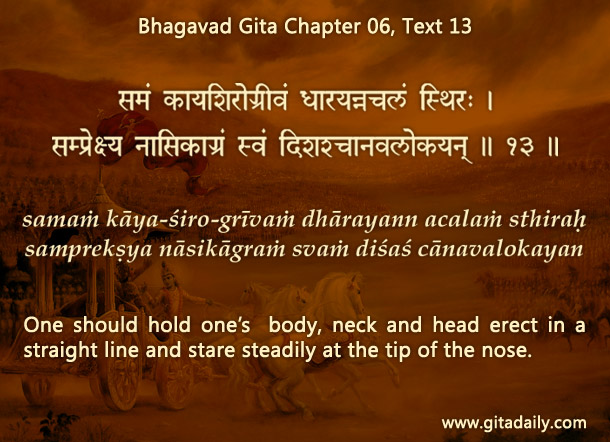In today’s cultural imagination, yoga is often equated with physical postures meant for shaping and toughening the body. No doubt, practicing postures is better than ingesting chemicals for figure and fitness. Still, the postures alone are far from the equivalent of yoga.
Yoga refers etymologically and essentially to a process for attaining spiritual connectedness. Among the various such yogic processes, even if we restrict ourselves to the type of yoga that incorporates bodily postures – dhyana-yoga, still the postures are just one of its eight stages. As explained in Patanjali’s Yoga-sutras, these eight stages are: yama (don’ts), niyama (dos), asana (postures), pranayama (breath regulation), pratyahara (withdrawal of senses), dharana (concentration), dhyana (meditation) and samadhi (spiritual trance). Because yoga comprises these eight stages, it is often called ashtanga-yoga (eight-limbed yoga).
If we consider yoga’s nomenclature as a personification, then the contemporary fad of misappropriating just one of these stages is like lobotomizing yoga –cutting off seven of its limbs and reducing it to a handicapped ekanga-yoga (one-limbed yoga) that has little, if any, spiritual potency. Posture practitioners frequently pursue bhoga (bodily indulgence) and treat yogic postures as a tool for increasing bhoga. As such indulgences increase material attachments, the fragmented practice of bodily postures can grant neither liberation, nor spiritual fulfillment. Thus, those who lobotomize yoga lobotomize their own spiritual prospects.
The Bhagavad-gita illuminates these prospects. In its sixth chapter that deals with dhyana-yoga, it just (06.13) mentions yogic postures and immediately (06.14) dives into yoga’s heart, meditation on Krishna, who is the highest spiritual truth, the ultimate object of meditation, the granter of the supreme fulfillment.
If posture practitioners let the faith they have acquired by experiencing yoga’s material benefits prompt them to explore yoga’s spiritual side, Gita wisdom stands ready to help them attain yoga’s full blessing: the eternal ecstasy of spiritual love for Krishna.

Explanation of article:

Very good thanks,
Yoga is a union with mind and body to reach the super consciousness, our real nature in this and every world.
Hari Om
Yes, I have explained the concept of super-consciousness here:
http://www.thespiritualscientist.com/2015/04/is-super-consciousness-the-same-as-krishna-consciousness/
ys
ccdas